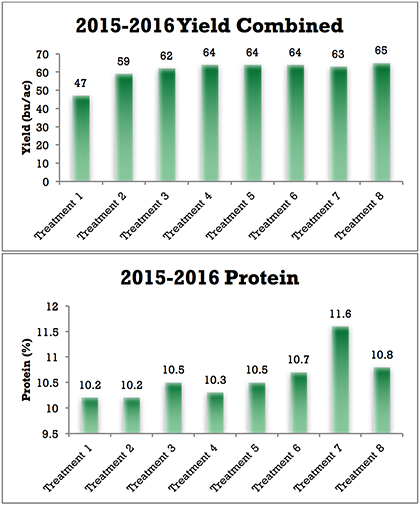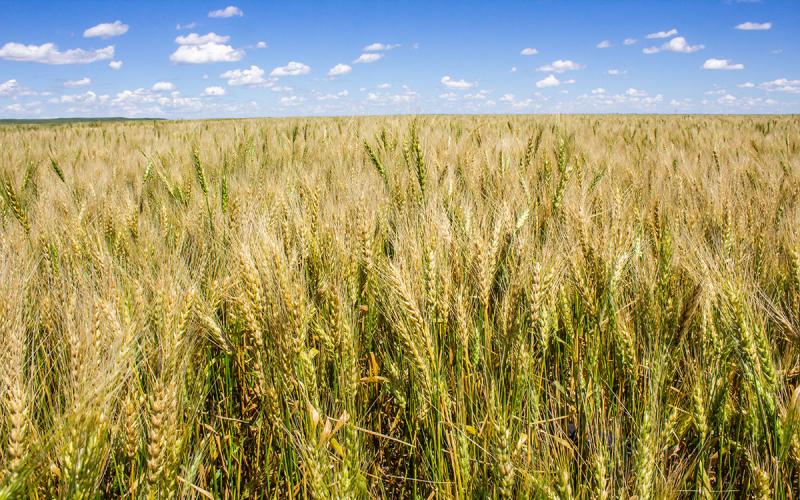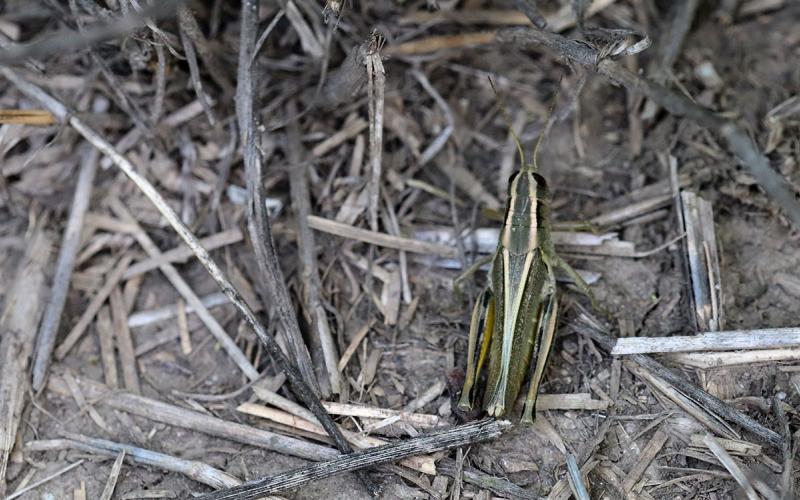It has been known for long that split-applying nitrogen (N) can be an effective practice in winter wheat. Adequate N early in the growing season is important to support healthy tillering and to give young plants the best opportunity to survive the sometimes-harsh South Dakota winter. Excessive N can encourage more vegetative growth and increase lodging. Knowledge of soil test N levels from pre-plant soil testing along with the utilization of split N applications can be effective tools for winter wheat growers. It allows them the flexibility to provide plants with minimal N through the early part of the growing season and still ensure that adequate N is available to the plant later in the growing season.
Research: Yield Benefits of Split N Applications
The yield benefits from split-application are more readily apparent in wetter climates. Winter wheat N requirements are quite unique in that uptake spans eight or nine months of the year. Nitrogen applied as a single application at planting is susceptible to leaching and denitrification losses during wet springs, while urea may also be lost through volatilization. Split-applying N gives growers much more flexibility in choosing both the rate and the type of N to apply. By waiting until the spring or early summer, growers can assess winter-kill and tillering. Based on this assessment, one can modify the intended N rate to support current growing conditions and factor in winter and early spring weather.
In drier climates, N losses are typically less and residence time is increased. The question to be asked then is if split-applying N still benefit winter wheat? Studies by the SDSU Plant Science Department suggest that there are still some valuable reasons for doing so. Research over the past two years in Wall, SD has shown that there is little or no yield penalty for a split-application and it can increase protein content. Table 1 shows 8 N-application scenarios comparing urea and urea-ammonium-nitrate (UAN) applied either at planting or later in the spring (green-up) and/or early summer (Feekes 6).
| Treatment | Starter N (applied with seed) |
|
|
|
Total N applied (lb/ac) | ||||||
| Fertilizer type | Application method | Rate (lb/ac) | Fertilizer type | Application method | Rate (lb/ac) | Fertilizer type | Application method | Rate (lb/ac) | |||
| 1 | 8 | - | - | - | - | - | - | - | - | - | 8 |
| 2 | 8 | UAN | Mid-row band | 42 | - | - | - | - | - | - | 50 |
| 3 | 8 | UAN | Mid-row band | 60 | - | - | - | - | - | - | 68 |
| 4 | 8 | Urea | Broadcast | 60 | - | - | - | - | - | - | 68 |
| 5 | 8 | - | - | - | Urea | Broadcast | 60 | - | - | - | 68 |
| 6 | 8 | UAN | Mid-row band | 42 | - | - | - | UAN | Stream bar | 18 | 68 |
| 7 | 8 | - | - | - | - | - | - | UAN | Stream bar | 60 | 68 |
| 8 | 8 | - | - | - | Urea | Broadcast | 42 | UAN | Stream bar | 18 | 68 |
Findings

Adding N at a full 68 lb/ac rate1 increased yield over the control (starter N only) by approximately 15 bu/ac, regardless of fertilizer type or application timing (Figure 1). Moreover, this research showed that adding only starter N (8 lb/ac) at seeding and applying N in the spring or even later in the summer resulted in no yield loss. Yield was maintained and protein content was even increased when N was applied closer to growth stage Feekes 6, which is the time of maximum N uptake for wheat (Figure 1).
It may be argued that these results also show that there is no yield loss for applying all of the season’s N at planting. Logistically, this is appealing because some fields may be too wet in early spring and growers are extremely busy with other operations at sidedress time. However, while this work is still preliminary, the results do suggest some economic and environmental benefits in waiting to apply the majority of N to winter wheat until after green-up in the spring, even in drier climates.
1 Determined based on SDSU recommendations using the equation: N Rate = Yield Goal (50 bu/ac) x 2.5 – Soil Test N


